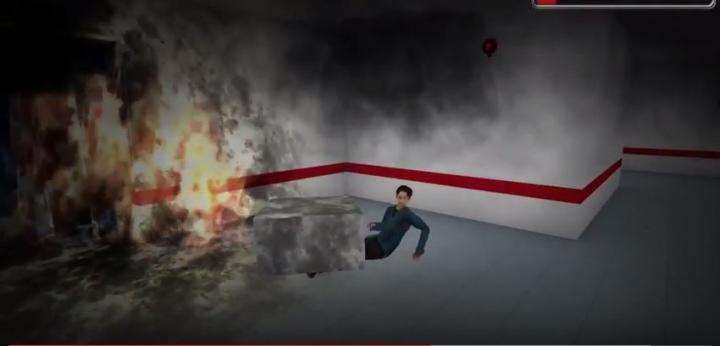Studying altruism through virtual reality

A computer-based environment developed with the aim to shed light on the origins of altruism: this is the innovative approach used by a research group at SISSA in Trieste, in collaboration with the University of Udine. This new study - recently published in the journal Neuropsychologia - immersed participants in a virtual environment that reproduced a building on fire which they had to evacuate in a hurry, deciding whether to save their lives or interrupt their escape and help rescue an injured person. The results showed that altruistic individuals self-reported to have greater concern for others' wellbeing and had larger right anterior insula (a brain area involved in processing social emotions) compared to non-altruists. These results shed light on the role of compassion in motivating helping behaviour and its brain correlates.
«Our prosocial and altruistic impulses play a very important role in sustaining complex societal structure", explained Giorgia Silani, the principal investigator of this research conducted at SISSA and now a researcher housed in University of Vienna, «However, studying altruism and its neural basis in lab-based environment poses unique ethical challenges. Indeed, it is difficult, if not impossible, to reproduce harmful situations realistically and then studying participant's helping behaviour, especially if such situations pose physical threat to the life of the participant...".
In order to overcome these difficulties, researchers created a contextually-rich virtual reality environment in which participants were completely immersed. Indrajeet Patil, a former PhD student at SISSA and lead author of the paper, and currently a postdoctoral researcher at Harvard University, explained the novelty of the task: «During the experiment, participants were placed in a building from which they had to escape because of a sudden fire. The computer-based environment was characterised by intense audio-visual cues that contributed to increasing the experimental realism of the situation on the one hand, and the feeling of anxiety and danger on the other. Besides, a bar indicated how much "life energy" was left in one's avatar". Toward the very end of the escape, when there was very little energy left, participants had to make a very difficult decision: whether to rescue an injured person trapped under a heavy cabinet risking their own lives, or run for the exit ignoring the individual's cries for help.
As participants completed the task in the virtual environment, described by all as «very realistic", they underwent an MRI scanning to help acquire information about brain structure. Investigating the participants' cerebral structure, scientists were able to relate their behaviours with the anatomy of specific areas of the nervous system.
«The results highlighted that majority of the people made altruistic choice: 65% stopped to rescue the injured person despite the threat to the (virtual) self. Additionally, questionnaire data revealed that individuals who helped the trapped human scored higher on empathic concern. Thus, an individual's willingness to help others in need at a cost to the self seems to be driven by other-oriented caring motivation" Indrajeet Patil underscored the important takeaway message from the study. With regards to the brain structure data, researchers found that the altruistic individuals had a larger anterior insula compared to that of those who chose to escape without helping. «The insula is an area strictly connected to the processing of our social emotions" Giorgia Silani highlighted. «In this research, we were thus able to assay neurostructural correlates of helping behaviour. This work helps to generate various interesting hypotheses that can be investigated in future work".
More information: Indrajeet Patil et al, Neuroanatomical basis of concern-based altruism in virtual environment, Neuropsychologia (2017). DOI: 10.1016/j.neuropsychologia.2017.02.015


















